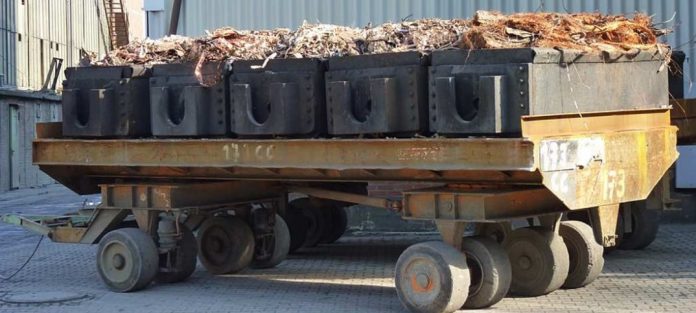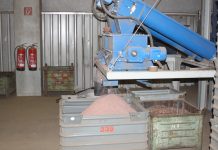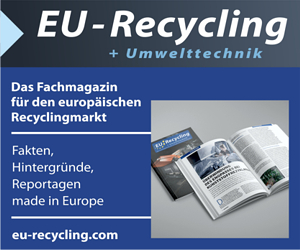The International Copper Study Group (ICSG) released preliminary data for August 2019 world copper supply and demand in its November 2019 Copper Bulletin. The Bulletin and ICSG online statistical database provide detailed data, on a country basis, for copper mine, smelter, refined and semis production and copper refined usage, trade, stocks and prices.
The bulletin is available for sale (annual subscription €550/€850 for orders originating from/outside institutions based in ICSG member countries).
Preliminary data indicates that world mine production declined by about 0.5% in the first eight months of 2019, with concentrate production remaining essentially unchanged and solvent extraction-electrowinning (SX-EW) declining by 1.5%:
- Reduced output in major producing countries more than offset growth in other countries.
- Production in Chile, the world’s biggest copper mine producing country, declined by 0.5% mainly due to lower copper head grades and a few production disruptions that occurred early in the year.
- Indonesian output declined by 51% as a consequence of the transition of the country’s major two mines to different ore zones leading to temporarily reduced output levels.
- After growth of 13% in 2018, aggregated production in the Democratic Republic of Congo (DRC) and Zambia declined by 2% as consequence of temporary suspensions at SX-EW mines, reductions in planned production and few operational constraints.
- Production in few major copper mine producing countries, including Australia, China, Mexico, Peru and the United States increased due to improved grades and recovery from constrained output in 2018.
- Panama started mining copper earlier this year, with the commissioning of the Cobre de Panama mine, and is the biggest contributor to world mine production growth in the first eight months of 2019.
- On a regional basis, mine production is estimated to have increased by around 3.6% in North America, 1.3% in Latin America and 8% in Oceania but declined by 7% in Asia, 1.2% in Africa and 2.5% in Europe.
Preliminary data indicates that world refined production remained essentially unchanged in the first eight months of 2019 with primary production (electrolytic and electrowinning) declining by 0.3% and secondary production (from scrap) increasing by 1.8%. World refined production growth was constrained as a consequence of:
- A 32% decrease in Chilean electrolytic refined output due to temporary smelter shutdowns whilst undergoing upgrades to comply with new environmental regulations. Total Chilean refined production (including Electrowinning) declined by 12%.
- A 33% decrease in Zambian refined output due to power supply interruptions, smelter outages and temporary shutdown and the introduction on 1st January 2019 of a 5% custom duty on copper concentrate imports constraining smelter feed.
- A decline of 25% in India’s production which was negatively impacted by the shutdown of Vedanta’s Tuticorin smelter in April 2018.
- Reduced output in Japan, Peru, the United States and a few European countries due to smelter maintenance shutdowns.
- However, these reductions were offset by growth in Chinese output and by increases in countries recovering from production constraints in 2018 such as Australia, Brazil, Iran and Poland.
- On a regional basis, refined output is estimated to have increased in Asia (3.5%) and in Oceania (15%) but declined, in North America (-3%), in Latin America (-9.5%), in Africa (-8%) and in Europe (-1%).
Preliminary data indicates that world apparent refined usage grew by a modest 0.5% in the first eight months of 2019:
- Although Chinese net refined copper imports declined by 13%, Chinese apparent usage grew by around 2.4% as a consequence of higher Chinese refinery output.
- Among other major copper users, demand increased in the United States, India and Taiwan (China) but declined in the EU and Japan.
- World ex-China usage declined by around 1.5%.
Preliminary world refined copper balance in the first eight months of 2019 indicates a deficit of about 330,000 tonnes:
- In developing its global market balance, ICSG uses an apparent demand calculation for China that does not take into account changes in unreported stocks [State Reserve Bureau (SRB), producer, consumer, merchant/trader, bonded]. To facilitate global market analysis, however, an additional line item—Refined World Balance Adjusted for Chinese Bonded Stock Changes – is included in the attached table that adjusts the world refined copper balance based on an average estimate of changes in unreported inventories provided by three consultants with expertise in China’s copper market.
- In the first eight months of 2019, the world refined copper balance, based on apparent Chinese usage (excluding unreported/bonded stocks), indicated a deficit of about 330,000 t.
- The world refined copper balance adjusted for changes in Chinese bonded stocks indicated a market deficit of around 408,000 t.
Copper Prices and Stocks
Based on the average of estimates provided by independent consultants, China’s bonded stocks are thought to have declined by about 80,000 t in the first eight months of 2019 compared to the year-end 2018 level. Bonded stocks declined by around 35,000t in the same period of 2018. As of the end of October, copper stocks held at the major metal exchanges (LME, COMEX, SHFE) totalled 431,192 t, an increase of 80,696 t (+23%) from stocks held at the end of December 2018. Stocks were up at the LME (+93%) and SHFE (+20%) and down at COMEX (-67%). The average LME cash price for October 2019 was US$ 5,742.89 /t, down 0.04% from the September average of US$ 5,745.48/t. The 2019 high and low copper prices through the end of October were US$ 6,572 /t (on 1st Mar) and US$ 5,537 /t (on the 3rd September), respectively, and the year average was US$ 6,007.69 /t (7.9% below the 2018 annual average).
Please visit the ICSG website for further copper market related information.
Source: International Copper Study Group (ICSG)






